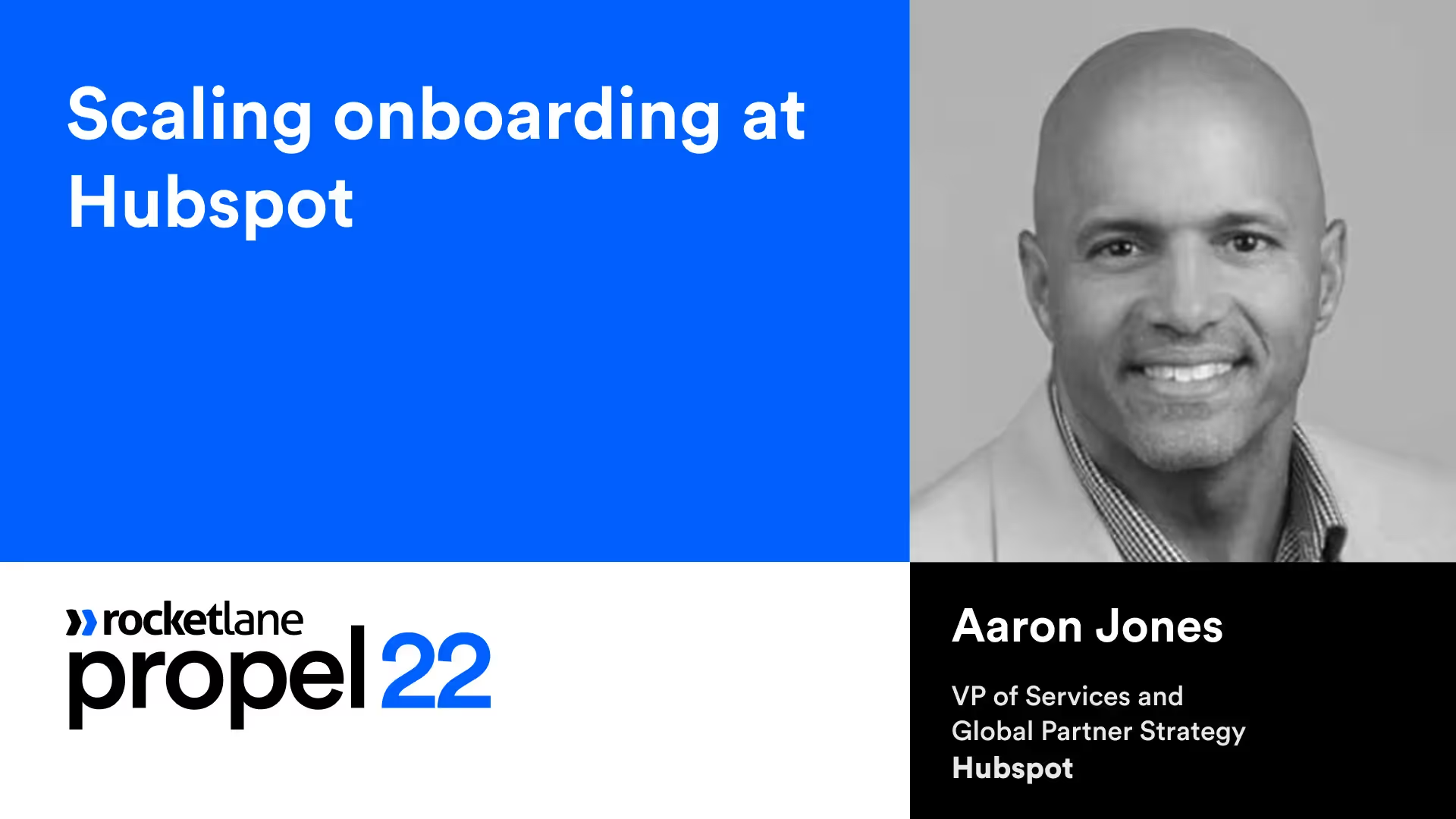Aaron Jones, VP of Global Professional Services at Hubspot, shared his insights on how Hubspot scaled its onboarding process.
He spoke about:
- The Hubspot journey
- The need for scale
- The need for an evolving onboarding strategy
- Scaling onboarding
- Results of effective scaling
Here are some of the key takeaways from Aaron's session.
The Hubspot Journey
When HubSpot started, its growth was fueled by marketing and sales automation. Those were the primary products that Hubspot's customers bought.
Their mission is to help millions of customers grow better. And they've always focussed on product adoption, mainly post-sales.
Historically, this means solving for the customer at every touchpoint, whether onboarding, professional services, support, or customer success. Everyone lives and breathes solving for the customer.
So 16 years ago, Marketing Hub was launched, followed by Sales Hub, with marketing and sales automation being the focus. Since then, Hubspot has launched Services Hub, CRM, and Operations Hub. Currently, they are operating in more markets than ever before.
The need for scaling
As a fully-integrated CRM, having generalists in onboarding didn’t scale and didn’t meet the needs of Hubspot’s customers. Hubspot, therefore, is leaning into specialization by product and industry so that they can really speak the language of their customers and deliver even more value.
They are also global and have offices in 11 countries and customers in 120 countries. So they have a need for localization and language support since they can't have a physical presence in every country where they have customers.
Despite that, they are growing at 40% or more year over year.

The need for an evolving onboarding strategy
Hubspot realized that linear growth is just not sustainable. To keep up with volume and onboarding, they realized they needed to scale nonlinearly. So the key is to maintain efficiency and create more and better onboarding options that meet their customers' needs.
Traditional onboarding was simple. It was one-to-one high touch, and Hubspot had very talented onboarding specialists leading it. It was pretty effective too. However, it was only one approach to onboarding. More often than not, one size does not fit all. It's just not scalable. If you have explosive growth and don't have scalable options, you will experience explosive hiring needs.
So what did Hubspot do?
They listened!
They listened to their customers, sales team, and success and support reps and leaders. And the takeaways were pretty consistent.

How did Hubspot scale onboarding?
- They realized a diverse customer base requires diversity in onboarding choices.
- They segmented the customer base and presented the best options to the best-fit customers.
- They onboarded customers based on their needs rather than pushing customers through a single onboarding process.
- They created offerings that account for customer types at the low, middle, and high end of the market.
- Planned for re-onboarding existing customers.
The approach
- Leverage automation and tech-touch for customers that are self-sufficient for onboarding (they are investing heavily in automation and technology)
- Modular/Cohort-based Onboarding
"We've divided our onboarding content into modules. Then we created several customer personas and aligned those modules to each of those personas. Each module is delivered live in a group setting with other customers, allowing them to learn together and build a sense of community. What can be really valuable is that customers can consume these modules in any order that they choose that aligns with their priority. It's also a great option if you have to re-onboard existing customers."
- High touch, 1:1 onboarding (for middle and high-end customers)
- Partner ecosystem
"Partners can be an undervalued resource. As mentioned earlier, HubSpot has customers in 120 plus countries. So a strong partner ecosystem can be a tremendous asset in deals where we don't have a physical presence."
The Results

The results Hubspot has seen have been astounding. Hubspot was ranked number one by TrustRadius for the “Most Loved Product” category in 2022. Although there are many things that contributed to this recognition, Aaron feels onboarding played a significant role in it.
As Hubspot has had 40% growth year over year, onboarding headcount has grown significantly lesser. Hubspot has managed this feat by creating efficient and scalable onboarding offerings to serve its customers.

























.webp)